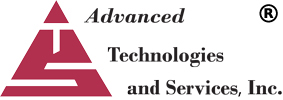USF Safe Harbor is Costing You Money
In our regulatory work, we’re often surprised by how many providers don’t know that they can lower their USAC obligation with a USF Traffic Study to identify their actual Percent of Interstate Usage (PIU) rather than using the FCC’s Safe Harbor rate. Safe Harbor is a standard number that assumes that a pre-determined percent of a provider’s calls (64.9% for VoIP, 37.1% for Wireless) were interstate or international in nature. In our experience, we’ve found that carrier’s actual PIU’s are typically around half of the FCC’s Safe Harbor Percentage.

Different Providers, Same Benefits
While the benefit of traffic studies to reduce USF costs is clear, there is more than one incentive for carriers to complete a traffic study. In every single traffic study we’ve completed, providers saw a decrease in their USF Contribution (seriously, every single one) . Here’s how we’ve seen carriers benefit from them;
- VoIP and Wireless companies have an extremely high safe harbor rate of 64.9%, and 37.1, respectively. In our history of traffic studies, most actual PIU’s don’t even come close to these safe harbor rates.
- De Minimis carriers that are close to the FCC’s threshold use traffic studies to validate that they are indeed de minimis. If smaller providers use the safe harbor rate, there’s a much higher chance that their percent of interstate or international revenue will be over the de minimis threshold.
To be sure that you’ll benefit from a traffic study, we offer a free analysis on a subset of data to get a good idea of how low your actual Percent of Interstate Usage is.
Download USF Wireless Case Study
Friendly, Experienced Professionals
USF Resources
USF Safe Harbor is Costing Carriers Money
Blog
The Universal Service Fund (USF) has proven it’s value in creating an all-inclusive broadband network. However, the rising costs of USF fees have caused industry professionals to call for a change in how service providers contribute to the fund.
Current Quarter’s Contribution Factor
USAC
“The contribution factor is the percentage of end user revenue that will be contributed to the Universal Service Fund to support the universal service programs, as established by the FCC. The contribution factor changes every quarter.”
USF Traffic Study – VoIP
Case Study
VoIP providers contribute to the Universal Service Fund (USF) with a Safe Harbor rate of 64.9%. Providers have to pay the USF Tax themselves, pass the increase to their customers, or take a closer look at their actual percentage of interstate usage.
